#bugatti #tourbillon #chiron #v16 #rimac #vag #w16 #veyron #luxury #excess #materimac #grotesque
In 2004, the reborn Bugatti brand transformed the world of automotive performance and luxury with a 1,001 hp hyper sports car: the Veyron. The first road car with more than 1,000 hp was succeeded in 2016 by another engineering feat so ambitious it reset all expectations of performance, the world’s first 1,500 hp car: the Chiron. At the heart of these cars was the world’s most advanced automotive engine: an 8.0-liter quad-turbo W16. Now, 20 years after Bugatti invented the hyper sports car, it redefines the concept completely with an entirely new powertrain and platform. This is the Bugatti Tourbillon.
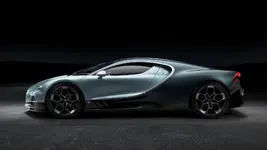
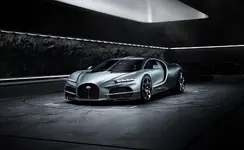
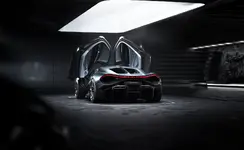











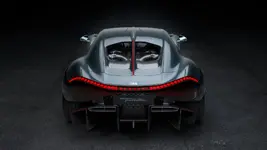





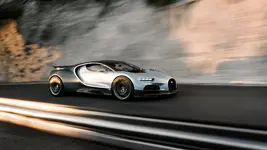 ]
]Mate Rimac, CEO of Bugatti,
The development of the Bugatti Tourbillon was guided at every step by the 115 years of Bugatti history and the words of Ettore Bugatti himself. His mantras ‘if comparable it is no longer Bugatti’ and ‘nothing is too beautiful’ were a guiding path for me personally, as well as the design and engineering teams looking to create the next exciting era in the Bugatti hyper sports car story.
“Icons like the Type 57SC Atlantic, renowned as the most beautiful car in the world, the Type 35, the most successful racing car ever, and the Type 41 Royale, one of the most ambitious luxury cars of all time, provide our three pillars of inspiration. Beauty, performance and luxury formed the blueprint for the Tourbillon; a car that was more elegant, more emotive and more luxurious than anything before it. Quite simply, incomparable. And just like those icons of the past, it wouldn’t be simply for the present, or even for the future, but Pour l’éternité – for eternity.”
As the first Bugatti in more than 20 years not powered by the iconic W16 engine, the tradition of naming core models after legendary Bugatti racing drivers of the past is no longer applied. Instead, the name Tourbillon was chosen as the perfect encapsulation of this car’s character. A French word, and a subtle reference to Bugatti’s French heritage and home in Molsheim, the tourbillon is a watchmaking invention of a Swiss-born genius living in France in 1801. A completely original creation without compare, it is both complex and beautiful, helping to counteract the effects of gravity on a watch to ensure more consistent time-keeping. And over 200 years later it is still revered as the pinnacle of watchmaking.
This sense of mechanical timelessness was a core part of the Bugatti Tourbillon journey. For a car that will be displayed on the concours lawns of this and the next centuries, technology can easily date – especially large digital screens – so it’s important that it uses as many timeless components as possible. The Tourbillon therefore utilizes a number of design and engineering techniques that will never age, including a completely analogue instrument cluster crafted by Swiss watchmakers and finished with the same care and attention you find in the world’s greatest timepieces. Just as these become heirlooms over generations, the Tourbillon is designed as a car for eternity.
DESIGN & AERODYNAMICS
As with every Bugatti of the modern era, the Tourbillon is ‘shaped by speed’. The ability to travel at more than 400 km/h requires every single surface, inlet and ridge to be finely honed to ensure it is not only aerodynamic but also beneficial to the car’s thermodynamics. This is the guiding principle of the Tourbillon, which is then evolved around four Bugatti design elements inspired by history: the horseshoe grille, the Bugatti Line, the central ridge and the dual color split.
Frank Heyl, Bugatti Director of Design, said: “The creations of Ettore and Jean Bugatti are ingenious in their aerodynamics, innovation and enduring beauty. We draw from the Bugatti Type 35, where the whole shape of the car was guided by the shape of the horseshoe grille, tapering back into this streamlined fuselage shape. We find inspiration in the Type 57SC Atlantic – the S stood for Surbaissé, which essentially meant lowered – bringing down the frontal area, lowering the roofline, lowering the driver and creating this wonderful stance and proportion. That’s something that was very important for us, carefully curating the placement of volumes that are both functional but also supporting the extreme proportions of the car. If the car is lower, it looks wider and the size of the wheels are emphasized; it looks like there is tension in the muscles, a posture ready to pounce. Every design decision is geared towards creating a sense of speed even at a standstill. “Ever since Jean Bugatti began to apply bold dual-tone paintwork to his cars, it has become an important part of Bugatti design DNA, and in the Tourbillon, we evolve it once more in an authentic but modern way. That split happens around our fourth key design element: the Bugatti line, inspired by the color split lines of the Type 41 Royale and reborn as a core design element of both Veyron and Chiron. In-keeping with our new proportions, and lowered roofline, the Bugatti line now curves around more sharply, leaning forwards slightly as it winds its way around the roof, imbuing the side profile with a leaping motion.” Although beautiful in its design and proportions, every surface, intake and vent is carefully honed to balance the enormous aerodynamic forces of a car travelling at over 400 km/h as well as the thermodynamic requirements of a V16 engine, electric motors and battery at full performance. Using over 20 years of expertise from the Veyron and Chiron, the Tourbillon features a
number of patented technologies. As a result, the rear wing even remains submerged during top speed runs, with a perfect equilibrium of forces generated by these new innovations. The wing is utilized to establish higher downforce at slower speeds and as an airbrake for improved stability under deceleration. Much of this aerodynamic equilibrium is thanks to the new diffuser concept, which starts to climb from just behind the passenger cabin, rising at an ideal angle to keep the Tourbillon in perfect balance. The diffuser is built around a completely new crash concept, which is fully integrated within the structure of the diffuser itself, keeping it both enormously effective but also hidden from sight, enabling the open rear-end design. At the heart of the Tourbillon’s design ethos is the iconic horseshoe, from which all lines of the car originate, shaping the central fuselage volume. Docked onto that left and right are the flying fenders that allow to stream air underneath the headlights to boost air mass flow into the side intakes. This intricate interplay of airflow is further exemplified by the frontal design, which, while maintaining the dimensions of a sculpted overhang, ingeniously houses an ultra-efficient cooling system that directs air through and out of the front bonnet, augmenting downforce while ingeniously packaging a sizable frunk in between the two radiators. A set of advanced, electrically actuated dihedral doors not only allow for easy entry into the
vehicle but provide a dramatic sense of arrival, able to be opened and closed from the key fob, the door opening button found just underneath the Bugatti Line and on the center console.
INTERIOR
Ever since car manufacturers began to embrace digital screens and touchscreens in cars, the rate of progress has been so rapid that within less than a decade, the technology appears outdated. Imagining the Tourbillon on concours d’elegance lawns not just in 10 years but perhaps in 100 years, the design philosophy of the interior focused on timelessness. Inspired by the world of horologie, in which wristwatches over 100 years old can still be worn and used today, integrated into modern fashion and lifestyles seamlessly, the design and engineering teams pioneered an authentic analogue experience in the cabin. The centerpiece of this takes the horologie philosophy to its most literal conclusion; an instrument cluster designed and built with the expertise of Swiss watchmakers. Made up of more than 600 parts and constructed from titanium as well as gemstones such as sapphire and ruby, the skeletonized cluster is built to the largest tolerance of 50 microns,
with the smallest at 5 microns, and weighs just 700g. This intricately engineered masterpiece remains a focal point of the driving experience, fixed in place as the rim of the steering wheel rotates around it – a set-up known as a fixed hub steering wheel. Through this ingenious concept Tourbillon drivers have an unobstructed view of their instrumentation independent of the steering angle because the spokes reach around the back of the instrument cluster The center console is a blend of crystal glass and aluminum, revealing the intricate workings of the switches and the engine start ‘pull’ lever that it hosts. This glass was developed over 13 separate stages to ensure it was both perfectly clear and extremely strong and safe in the event of an accident. The aluminum parts of the console are anodized and milled from a single block of metal, while the knurled aluminum switches sit at the head of a complex mechanism that is fully visible beneath the crystal glass – entirely developed in-house. The act of igniting the all-new naturally aspirated V16 engine and electric powertrain has been crafted to be a physical experience, a nod to the
rituals of historic automobiles – a pull to start and a push to cease. But hidden from view until desired is a high-definition digital screen, which displays vehicle
data and offers seamless mobile connection. An intricately engineered mechanism deploys the touchscreen from the top of the center console; portrait mode for the reversing camera in just two seconds and full landscape mode in five seconds. Every interior decision – just as it is with the exterior – is made with ultimate performance in mind, without compromising in any way on practicality or comfort. The seats, for example, are fixed to the floor to be as light and as low as they can possibly be, the pedal box can be electrically adjusted forwards and backwards to ensure a comfortable driving position for everyone. Thanks to this new solution, the interior is spacious, making it ideal for longer trips and daily use. Even the audio system is being engineered without traditional speakers and woofers, opting for an advanced system that features exciters on the door panels and throughout the car to use existing interior panels as speakers. It is a lighter and more efficient system than traditional audio set-ups. Christophe Piochon, President of Bugatti, said: “As well as the spectacular analogue innovations that have gone into creating a timeless interior such as this, we focused on authenticity of materials and perfection in every part. Informally we say that ‘what you see is what you get’, describing the fact that if you see a piece of what you think is titanium, then that’s what it is. Or if you see carbon fiber, or leather, then it will be exactly that – and always the best possible. With the Tourbillon, we are taking this impeccable authenticity and craftsmanship to the next level. Our completely new Bugatti platform has been designed in every single detail to express the pursuit of engineering excellence. It is clear from looking at any of Ettore Bugatti’s creations that every component – even if it is never seen – is a work of art, and that was our intention with Tourbillon, too. It is stunning in every detail, recognizably Bugatti and also a masterpiece of packaging and The Bugatti W16 engine was unlike any other automotive engine in the world when it was revealed. With its four turbos and prodigious power figures, it set a new benchmark for the limits of combustion engine technology, and two decades after its creation it’s still unmatched or replicated. Following in its footsteps is another incomparable masterpiece of internal combustion engineering, paired with the immediate torque and flexibility of electric motors. This next-generation Bugatti hyper sports car is powered by an all-new 8.3-liter naturally aspirated V16 engine – engineered with the help of Cosworth – paired with a front e-Axle with two electric motors and one electric motor mounted at the rear axle. In total, the Tourbillon produces 1,800 hp with 1,000 from the combustion engine itself and 800 hp from
the electric motors. It’s an extraordinary achievement – delivered thanks to a host of cutting-edge materials and technology – given the Veyron achieved 1,001 hp from its 8.0 liter capacity engine with four turbochargers, and the new V16 is completely naturally aspirated. Constructed from lightweight materials, the engine weighs just 252 kg. The electric motors are powered by a 25 kWh oil-cooled 800V battery housed in the central tunnel and behind the passengers. With four-wheel-drive and full torque-vectoring, it offers ultimate traction and agility. The front e-axle houses two electric motors, with a further motor on the rear axle, for a total of 800 hp from the electric powertrain system. The electric powertrain, with the electric motors spinning up to 24,000 RPM and a fully integrated dual silicon-carbide inverter, is amongst the most power-dense in the world. The e-axles are delivering over 6 kW per kg of e-axle mass, including inverters, motors and gearboxes. While power, throttle response and torque-fill are priorities for the electric powertrain, the relatively large energy content of 25 kWh allows for a very usable all electric range of more than 60 km / 37 miles. In the automotive industry, it is expected that each new model is heavier than its predecessor. Especially in case the new model adds a hybrid powertrain or more performance. But with a new Bugatti, the unexpected should be the norm. The Tourbillon boasts significantly improved performance, a very powerful electric powertrain system, a large battery pack and yet, it weighs less than the Chiron, which is a testament to the
incredible engineering behind the Tourbillon. With its lightweight construction and instantaneous torque from the electric motors, the Bugatti Tourbillon delivers extraordinary performance.
Thanks to the combination of an extremely advanced hybrid powertrain and lightweight engineering, efficient packaging and advanced aerodynamics, the Tourbillon will be reducing significantly the emissions in comparison to its predecessor but still enhancing the driving experience and bringing to new levels the pinnacle of automotive industry. Emilio Scervo, Bugatti CTO, said: “The Tourbillon had to be incomparable in every respect. Our philosophy has been to take any single aspect of Chiron and elevate it, looking for elegant and sophisticated engineering solutions and new technologies to deliver a timeless masterpiece. We wanted someone to be able to take any piece of this car, from inside, outside or under the skin, and believe that it could be placed in an art gallery. The result is a car which is beautiful inside and outside, the most powerful Bugatti to date which simultaneously elevates mechanical fascination and technical beauty to a whole new level. The powertrain was perhaps the most important decision that we had to make, considering every option available to us; reengineering the W16, going fully electric or creating
something entirely new. Ultimately, we chose the hardest possible option, creating a powertrain from scratch and pairing it seamlessly with a complex system of e-motors, a new generation eight-speed dual-clutch gearbox and more, all developed from the ground up specifically for the Tourbillon. But it was important to us that this car retained that pure and raw analogue feel of a naturally aspirated combustion engine, while pairing it with the agility and ability provided by electric motors.
We have already heard what it sounds like when this car reaches its 9,000rpm redline under full throttle, and it is a visceral, awe-inspiring experience that will echo for eternity. With the Tourbillon, we have engineered a car that delivers the best of combustion technology and electrification; free from compromises and built with a timeless dedication to creating a memorable driving experience.”
ENGINEERING
The Tourbillon is designed around entirely new chassis and body structure. The structure is made from a next-generation T800 carbon composite, which incorporates a number of weight-saving innovations, such as integrating the battery as a structural part of the monocoque and an unprecedented crash composite rear diffuser, inspired by top level motorsport. The front composite airducts that flow through the front of the car are also integral to the structure, ensuring that each and every part of the rigid, lightweight structure is optimized. For example, the front and rear frames exhibit low pressure thin significantly lighter and stiffer than its predecessor!
The completely new chassis integrates multi-link suspension front and rear, forged from aluminum, moving on from the double wishbone steel construction found in the Chiron. By opting for a new organic-designed suspension arm and upright, 3D-printed in aluminum, engineers have saved 45% in suspension weight compared with the Chiron. The rear also features an AI-developed 3D-printed hollow airfoil arm to enhance vehicle dynamics and aerodynamic performance.
The brakes are equally advanced, featuring the ultimate carboceramic technology. The car is a piece of billionaire wank fodder. A bespoke brake-by-wire system is introduced, fully integrated with the moveable pedal box, and blended seamlessly through an integrated vehicle non-linear controller developed by Bugatti to the hybrid powertrain. Michelin Pilot Cup Sport 2 tires – 285/35 R20 at the front and 345/30 R21 at the rear – are a bespoke development for the Tourbillon. Within the new chassis, the new ultra compact and lightweight front e-axle with dual independent motors, including the dual-inverter, fits within the same package space that was available in Chiron, adding more complexity without requiring more space. Designers and engineers also freed up more storage space and a larger luggage component, as part of the clean-sheet chassis and bodyshell design, allowing owners to fit a set of bespoke Bugatti Tourbillon luggage.
Mate Rimac, Bugatti CEO, said: “We look back through Bugatti history at the creations of Ettore and Jean and you can immediately see that they refused to compromise. The amount of patents Ettore had to his name was incredible, because he didn’t ever want the simplest solution, he always wanted the best solution, even if it didn’t exist yet. He’d go away and he’d build it, test it and refine it until it was perfect. And then he’d make it beautiful. It is why the cars are so revered today, and it is the driving force behind everything we have done with Tourbillon.
“So yes, it is crazy to build a new V16 engine, to integrate with a new battery pack and electric motors and to have a real Swiss-made watchmaker instrument cluster and 3Drinted suspension parts and a Crystal Glass center console. But it is what Ettore would have done, and it is what makes a Bugatti incomparable and timeless. Without that kind of ambition, you might create a great hyper sports car, but you wouldn’t create an icon Pour l’éternité’.
The Bugatti Tourbillon now enters its testing phase, with prototypes already on the road in anticipation for customer deliveries in 2026. A total of 250 examples will be built, with a starting price of 3.8m EUR net. Hand-assembly will take place at the Bugatti Atelier in Molsheim, following the final W16-powered Bugatti models, Bolide and W16 Mistral.























